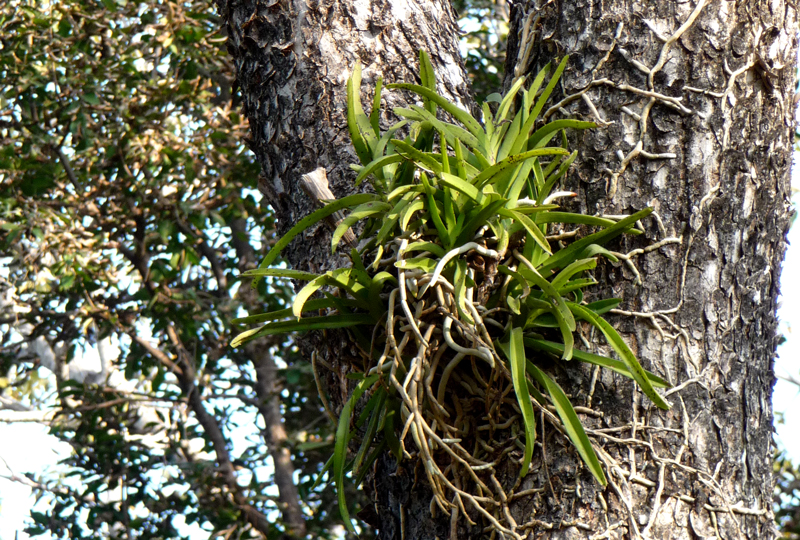|
IUCN Red List Status: Vulnerable (VU)
V anda spathulata (L.) Spreng., Syst. Veg. 3: 719 1826. (Syn: Aerides maculata Buch.-Ham. ex Sm.; Cymbidium spathulatum (L.) Moon; Epidendrum spathulatum L.; Limodorum spathulatum (L.) Willd.; Taprobanea spathulata (L.) Christenson); Epiphytic orchid Pench National Park,: …………………………………
– Here are mine from Tirupati
This is Vanda tessellata Did you compare the tip apex in the top pic and yours. Where di you get your picture from? – these were captured by myself in botanical garden of Shri Venteshwara University Tirupati and id was confirmed by one of the botanist there. You pls rectify/clarify the situation You please tell me the name of botanist and I will rethink :p….he must have seen the plant in flowering. There are around 5 species of Vanda in South and there are many other genera which looks like Vanda. Its not the matter of clarification. Its my view. Without flower!!! There are 35000 species of orchids in the world which makes it the biggest family of flowering plants. I always keep my doubts open with non flowering specimens. Vanda tessellata has peculiar leaf apex with pointed protrusion on two lobes and the center, i.e., three points.
Your plant seem to have rounded lobes of the apex what I can see in the pic with a point in the centre. If thats true then for sure this is not even Vanda from my side…..!! You may please share some more picture for me to recheck.
I would love to be proved wrong!!!! it is not a matter of right or not right. I have zero knowledge of orchids so cannot say anything. I will try to have some more close ups of the plant and also try to ask in SV Uni for confirmation. No sir you are taking it wrongly. They must have seen the flowers. I havent!! Even there are two more look alikes of Vanda tessellata in south. Flowers look very much similar, except for the lip apex. Yes … Mine is Vanda spathulata. Today i confirmed this from SV University Thats a good news. Now I know how to identify Vanda spathulata. This also shows the importance of flowers on the specimens for identification.
References:
|
Vanda spathulata
Updated on December 24, 2024

